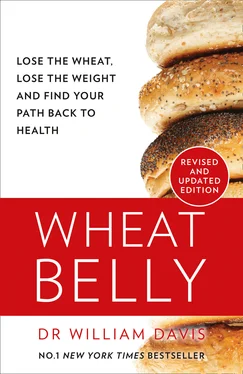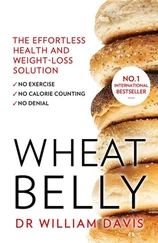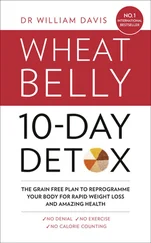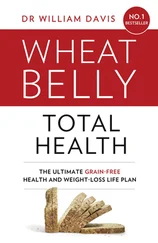Wheat and grains are rich in phytates, compounds that, like wheat germ agglutinin, provide pest-resistance to the plant. Once again, plant geneticists select strains richer in phytates and thereby are more pest-resistant. Phytate content parallels fiber content. This means that conventional advice to consume plentiful fiber from grains, such as whole grain breads and bran cereals hawked for promoting bowel regularity, thereby increases exposure to phytates. Problem: Phytates are effective binders of any mineral that has a positive charge. This includes iron, zinc, magnesium, and calcium. Phytates from grains are therefore a common cause of iron deficiency anemia, unresponsive to iron supplementation (since the iron never makes it to the bloodstream). 21, 22Zinc deficiency from phytates results in slowed wound healing, increased susceptibility to infections, skin rashes, impaired taste and smell, and slowed growth in children. 23Wheat consumption is one of several causes of magnesium deficiency that is ubiquitous and results in bone thinning, higher blood pressure and blood sugar, muscle cramps, and heart rhythm disorders. 24You may begin to appreciate just how many ironies there are in conventional diet advice: Eating more “healthy whole grains” to ensure adequate nutrition actually achieves the opposite .
As if this protein/enzyme smorgasbord weren’t enough, food manufacturers have also turned to fungal enzymes, such as cellulases, glucoamylases, xylanases, and β-xylosidases, to enhance leavening and texture in wheat products. Many bakers also add soy flour to their dough to enhance mixing and whiteness, introducing yet another collection of proteins and enzymes. And farmers add their own unique collection of herbicides and pesticides such as glyphosate, imazamox, malathion, and chlorpyrifos. Choosing organic sources may reduce or eliminate exposure to such chemicals, but you’ve still got to contend with all the components intrinsic to the wheat plant.
In short, wheat is not just a complex carbohydrate with gluten and bran. Wheat is a smorgasbord of compounds that vary widely according to genetic code. Just by looking at a poppy seed muffin, for instance, you would be unable to discern the variety of gliadins, wheat germ agglutinins, and other non-gluten proteins, phytates, and amylopectins contained within, much of it unique to modern semi-dwarf wheat. On taking your first bite, you might enjoy the immediate sweetness of the muffin’s amylopectin A, as it sends your blood sugar skyward, but you may be largely unaware of the toxic effects of its many other components until disaster strikes—in the form of pain and swelling caused by rheumatoid arthritis or stumbling and warm incontinence caused by cerebellar ataxia.
Let’s next explore the incredible wide-ranging health effects of your muffin and other wheat-containing foods.
PART TWO
WHEAT AND ITS HEAD-TO-TOE DESTRUCTION OF HEALTH
CHAPTER 4
HEY, MAN, WANNA BUY SOME EXORPHINS? THE ADDICTIVE PROPERTIES OF WHEAT
ADDICTION. WITHDRAWAL. DELUSIONS. Hallucinations. Wild, unrestrained outbursts. I’m not describing mental illness or a scene from One Flew Over the Cuckoo’s Nest. I’m talking about this food you invite into your kitchen, share with friends, and dunk in your coffee.
I will discuss why wheat is unique among foods for its curious effects on the brain, effects shared with opiate drugs. It explains why some people experience incredible difficulty removing wheat from their diet. It’s not just a matter of inadequate resolve, inconvenience, or breaking well-worn habits; it’s about severing a relationship with something that gains hold of your psyche and emotions, not unlike the hold heroin has over the desperate addict.
While you knowingly consume coffee and alcohol to obtain specific mind effects, wheat is something you consume for “nutrition,” not for a “fix.” Like drinking the Kool-Aid at the Jim Jones revival meeting, you may not even be aware that this thing, endorsed by all “official” agencies, is fiddling with your mind.
People who eliminate wheat from their diet typically report improved mood, fewer mood swings, improved ability to concentrate, and deeper sleep within just days to weeks of their last bite of bagel or baked lasagna. I have been impressed with how consistent these observations are, experienced by the majority of people once the initial withdrawal effects of mental fog and fatigue subside. I’ve personally experienced these effects and also witnessed them in thousands of people.
It is easy to underestimate the psychological pull of wheat. Just how dangerous can an innocent bran muffin be, after all?
“BREAD IS MY CRACK!”
Wheat is the Haight-Ashbury of foods, unparalleled for its potential to generate entirely unique effects on the brain and nervous system. There is no doubt: For some people, wheat is addictive. And, in some people, it is addictive to the point of obsession.
Some people with wheat addiction just know they have a wheat addiction. Or they identify it as an addiction to some wheat-containing food, such as pasta or pizza. They already understand, even before I tell them, that their wheat-food-addiction-of-choice provides a little “high.” I still get shivers when a well-dressed, suburban soccer mom desperately confesses to me, “Bread is my crack. I just can’t give it up!”
Wheat can dictate food choice, caloric consumption, timing of meals and snacks. It can influence behavior and mood. It can even dominate thoughts. A number of my patients, when presented with the suggestion of removing it from their diets, report obsessing over wheat products to the point of thinking about them, talking about them, salivating over them constantly for weeks. “I can’t stop thinking about bread. I dream about bread!” they tell me, leading some to succumb to a wheat-consuming frenzy and give up within days after trying to banish it from their lives.
There is, of course, a flip side to addiction. When people divorce themselves from wheat-containing products, 40 percent experience something that can only be called withdrawal.
I’ve personally witnessed thousands of people report extreme fatigue, mental fog, irritability, inability to function at work or school, even depression in the first several days to weeks after eliminating wheat. Complete relief is obtained by consuming a bagel or cupcake (or, sadly, more like four bagels, two cupcakes, a bag of pretzels, two muffins, and a handful of brownies, followed the next morning by a nasty case of wheat remorse). It’s a vicious circle: Abstain from a substance and a distinctly unpleasant experience ensues; resume it, the unpleasant experience ceases—that sounds a lot like addiction and withdrawal to me.
People who haven’t experienced these effects pooh-pooh it all, thinking it strains credibility to believe that something as pedestrian as wheat can affect the central nervous system as much as nicotine or crack cocaine do.
There is a scientifically plausible reason for both the addiction and withdrawal effects. Not only does wheat exert effects on the normal brain but also on the vulnerable abnormal brain, with results beyond simple addiction and withdrawal. Studying the effects of wheat on the abnormal brain can teach us some lessons on why and how wheat can be associated with such phenomena.
“GOD, IS THAT YOU?” WHEAT AND THE SCHIZOPHRENIC MIND
The first important lessons on the effects wheat has on the brain came through studying its effects on people with schizophrenia.
Schizophrenics lead a difficult life. They struggle to differentiate reality from internal fantasy, often entertaining delusions of persecution, even believing their minds and actions are controlled by external forces. (Remember “Son of Sam” David Berkowitz, the New York City serial killer who stalked his victims on instructions received from his dog? Thankfully, violent behavior is uncommon in schizophrenics, but it illustrates the depth of pathology possible.) Once schizophrenia is diagnosed, there is little hope of leading a normal life of work, family, and children. A life of institutionalization, medications with awful side effects, and a constant struggle with dark internal demons lies ahead.
Читать дальше












